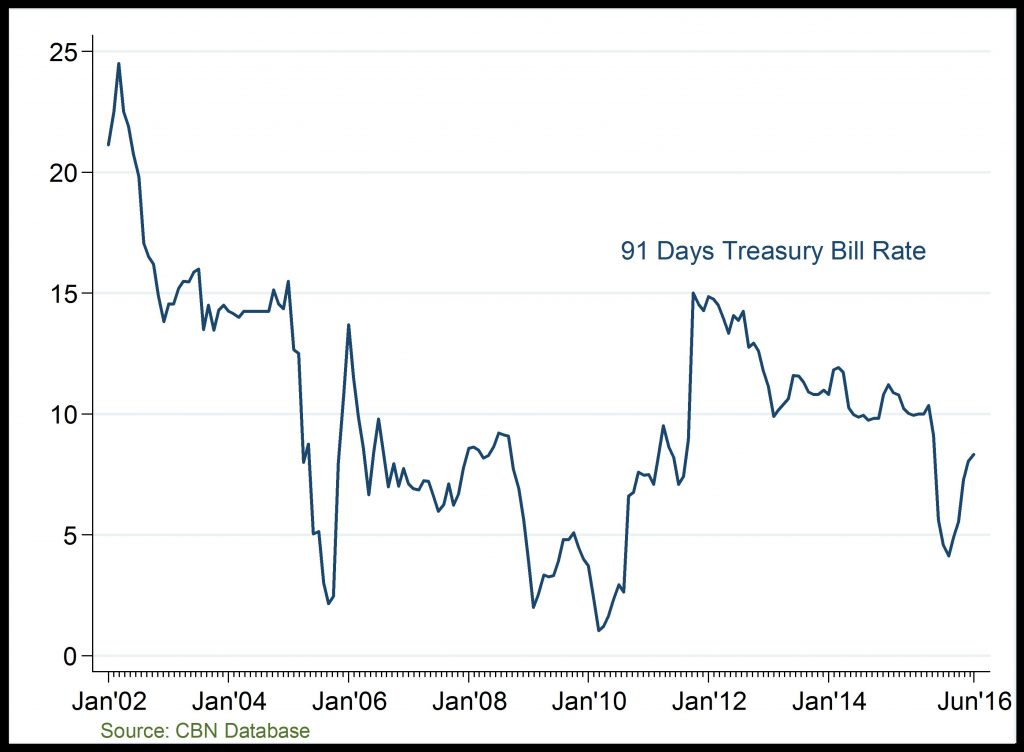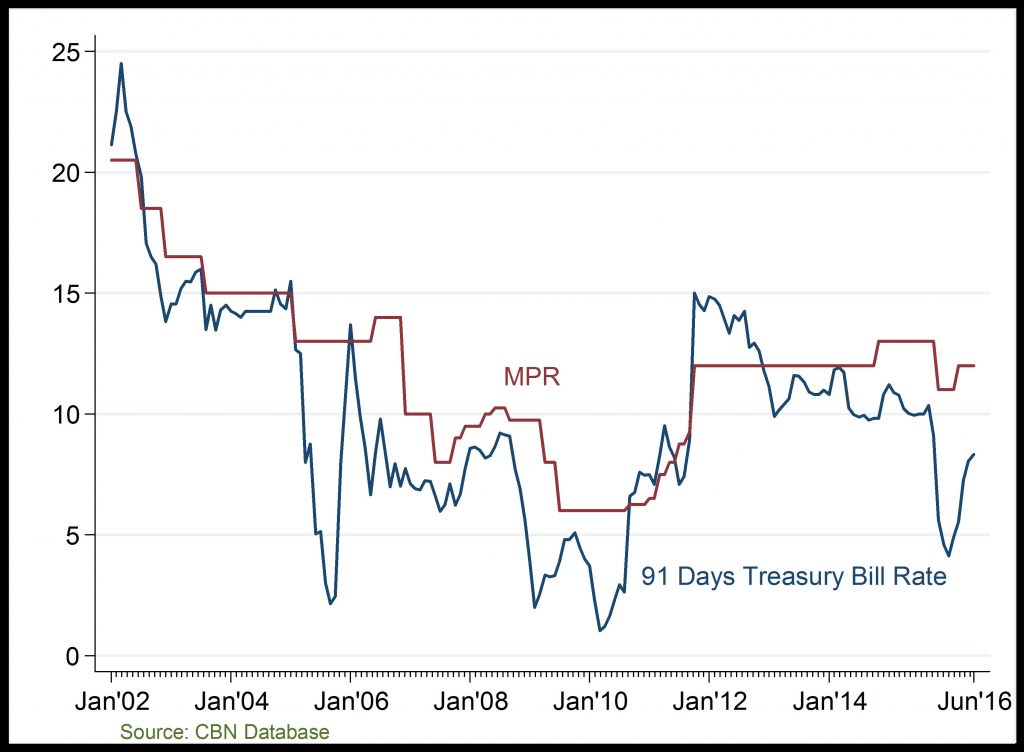91 Days Treasury Bill Rate (%)
T-bill rate rise in 2016Q2

MPR and Treasury Bill Rate (%)
T-bill mirroring official interest rate

91-Day Treasury Bills: T-bill rate has highly fluctuated overtime on the account of the rise and fall in investor confidence, monetary policy easing/tightening, governments demand for funds, and inflation (to a lesser extent). Particularly, T-bill rate increased at the end of 2016Q1 and 2016Q2, largely, on the account of the rise in MPR.
